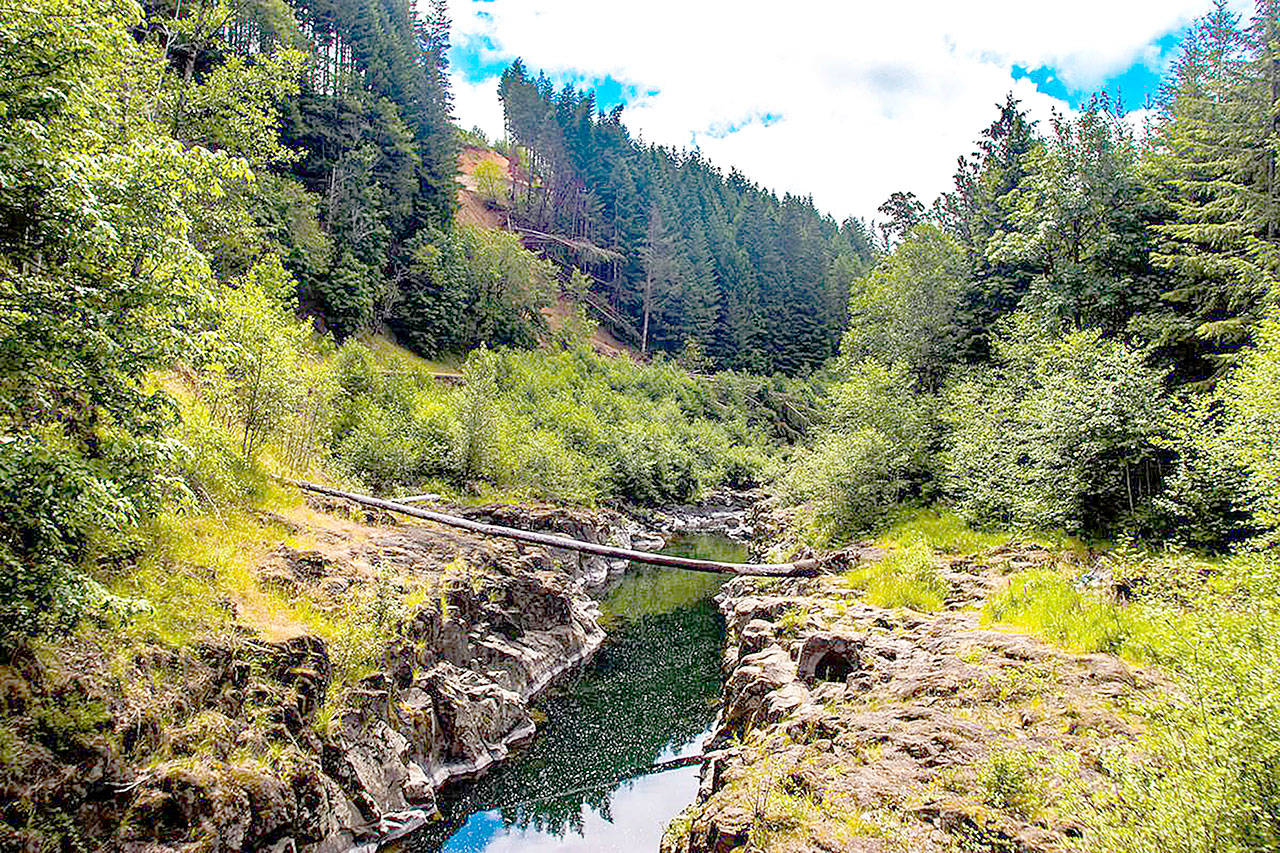A major environmental document on a proposal to build a dam in the upper reaches of the Chehalis River system to control flooding in the Chehalis Basin was released last Thursday (March 5) by the state Department of Ecology.
The idea of a dam has roots back to the massive flood that shut down I-5 in 2007 and caused serious flooding throughout the system, particularly in Centralia, Chehalis and rural Lewis County.
The public will now have two months to review and comment on the draft Environmental Impact Statement that runs to nearly 2,000 pages. Two public hearings are scheduled, including one in Montesano on April 2, from 5-8:30 p.m. at Montesano High School.
The dam is one element of a multifaceted flood-control effort known as the Chehalis Basin Strategy. Another element includes raising the level of a levee near the Chehalis-Centralia Airport along Interstate 5. There also is an array of projects designed to modify areas of the river system in ways that would both improve habitat for fish and diminish flooding. Some of those, such as the new Mill Creek Dam in Cosmopolis, have been completed. That project received $3 million. In all, $34 million has already been spent in Grays Harbor County in the past six years or so on localized flood-control projects and habitat mitigation for salmon.
But most of the focus in the Chehalis Basin Strategy will be on the dam, estimated to cost between $400 million and $600 million.
The draft EIS notes that the dam will “have significant and unavoidable environmental impacts.” It also says there is uncertainty over whether the mitigation and habitat projects foreseen in the strategy will be feasible or affordable enough to make up for the damage. It will be up to state agencies to decide that.
The application and permit process is likely to go on for years. While the State Environmental Protection Act, which includes the draft EIS, process proceeds, a national process is also underway. A federal draft environmental impact statement on the dam is due out in September.
The dam project is proposed by the Chehalis Basin Flood Control Zone District, which was created by Lewis County commissioners in the 1970s. The district is the official sponsor, but, the effort to address flooding solutions really gained momentum after then-Gov. Christine Gregoire got involved following the 2007 flood, which closed I-5 for five days.
That effort evolved into what is known as the Chehalis Basin Board, a seven-member body that works closely with the state DOE and governor’s office to carry out the Chehalis Basin Strategy. It includes representatives from state government, the Quinault Indian Nation and the Confederated Tribes of the Chehalis and the Chehalis Basin Flood Authority, which is a coalition of local governments.
The proposed dam would be built about a mile from Pe Ell in Lewis County. It is designed to let the river flow naturally through an opening at the base of the dam until heavy rains in the Willapa Hills, as measured by a river-flow gauge at Grand Mound, indicate a major flood is imminent. Smaller floods will be allowed to occur naturally. For major floods, openings at the base would be closed and water would be retained in a reservoir behind the dam and released slowly over weeks.
There would be a fish ladder to assist spawning fish through the dam. Some fish also would be captured and trucked above the dam to spawn.
Neither the Quinault or Chehalis tribal governments have taken a position on the dam, but they have clearly been concerned about the possible effects on salmon habitat.
Tyson Johnston, vice president, Quinault Indian Nation, is one of the seven Chehalis Board members. In a statement after the draft EIS was released, he said, “Guided by best, new and emerging science, the Quinault Nation is committed to giving the dam full and fair consideration.
“We look forward to learning more from this study about how the dam will affect salmon and our treaty rights while we continue to weigh whether a dam can be part of a comprehensive solution to reduce flood damage and restore habitat throughout the Chehalis Basin.”
Jay Gordon, an East Grays Harbor farmer, is also on the board. “We have to stay out of the ‘flood-fight-forget-repeat’ cycle,” he said in a statement. “The Chehalis Basin Strategy is our best chance to secure our future before it is taken away from us. This environmental review will inform our evaluation process as we continue working together across the Basin to reverse the decline of salmon, and protect our farms and communities from the predicted increase of flooding disasters.”
Grays Harbor County Commissioner Vickie Raines is chairwoman of the Chehalis Board, and said, “The sport and commercial fishing-related businesses of Grays Harbor, Hoquiam and Aberdeen have suffered, as has the Quinault Nation from salmon decline and sea level rise.
“We’ve seen these communities come together to see each other through the lean years. To survive, we need a coordinated effort to meet the accelerated impacts of a changing climate head on. This environmental review will help inform the Chehalis Basin Strategy that is working to meet that challenge.”
Links to the draft EIS and many other documents about the dam and larger Chehalis Basin Strategy are available under the news section of the Department of Ecology website at ecology.wa.gov. Information on how to comment is there, too.
A public hearing is scheduled April 2, in Montesano, from 5-8:30 p.m. at Montesano High School.



